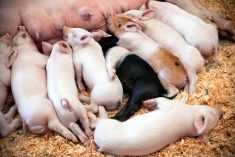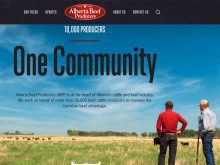Manitoba agriculture minister Rosann Wowchuk sees a fork in the road approaching for the province’s cattle industry.
The industry will reach it March 7, when the United States is expected to reopen its border to imports of Canadian cattle younger than 30 months.
At that time, the province’s cattle producers can again turn toward the U.S. to buy many of their cattle. Or, they can continue the drive to increase slaughter capacity in Manitoba, an effort that has gained momentum since exports of cattle to the U.S. stalled 19 months ago.
Read Also

Dennis Laycraft to be inducted into the Canadian Agricultural Hall of Fame
Dennis Laycraft, a champion for the beef industry, will be inducted into the Canadian Agricultural Hall of Fame this fall.
Wowchuk urged producers last week to stay the course toward increased domestic slaughter capacity.
“As a government, we’re committed to this, but we can’t do it alone” she said during the annual meeting of the Manitoba Cattle Producers Association in Brandon.
“We’re also looking to the industry to be very aggressive in pursuing new opportunities.”
There are a number of projects planned or under discussion to increase the number of cattle slaughtered in the province.
However, the push for more packing capacity could falter if producers are lured to sell their cattle into the U.S.
“If we go back there, we are very dependent upon one market,” said Wowchuk.
“I think we have to look at diversifying our economy and look at different opportunities.”
Larry Schweitzer, the association’s new president, agreed the province relied too heavily on the U.S. market. That reliance emerged in the past two decades as slaughter capacity shifted from Manitoba to Alberta.
“We realize we depended way too much on one customer here,” said Schweitzer, a feedlot operator at Hamiota, Man.
“We need to get those slaughter facilities back into Manitoba.”
Nationally, Canada’s cattle industry recognized that it was too reliant on the U.S. market well before shipments of cattle and beef were stalled in May 2003 by the discovery of BSE.
Recognition of that risk prompted efforts to expand markets for Canadian beef overseas and in countries closer to home such as Mexico.
“The neat thing about Mexicans is their average age is 24 years and they’re eating a hell of a pile of beef,” Ben Thorlakson, chair of the Canada Beef Export Federation, told producers.
New opportunities are emerging in Asia, particularly in Japan, he said. In the past, Canada struggled to sell beef into Japan because the Americans were well entrenched there.
However, Thorlakson said the Japanese are showing more confidence in Canada’s system for age verification of cattle, which could give Canadian beef a leg up over American product.
“What we have to do is learn from this trial we’ve been through,” said Thorlakson.
“One thing we have learned is that we were tremendously vulnerable in some markets.”
Canadian Cattlemen’s Association vice-president Hugh Lynch-Staunton said it is important to increase slaughter capacity in Canada.
However, he reminded producers that the U.S. market will remain important.
Efforts to rebuild the flow of cattle and beef there must continue, he said, which means getting policies and regulations in place that can alleviate the risk of trade disruptions over issues such as animal disease.
“It’s there and it’s important and that’s why we need to do a lot of work.”














